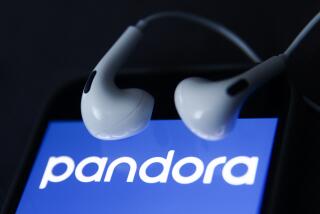Non-Yuppies Do Count, Ad Agency Study Says
- Share via
NEW YORK — If recent exposes of the celebrated yuppie life style have left you shamefully self-conscious because you lack an espresso machine, Cuisinart or BMW, take heart. Those yuppies--hiply underdressed and seriously overhyped--are not nearly as prevalent as much of today’s advertising would have us believe.
In a report focusing on the new American consumer, ad agency J. Walter Thompson Co.-U.S.A. found that yuppies actually represent “a very small percentage” of the baby boomer generation “while they get 90% of the publicity,” said Bert Metter, vice chairman of Thompson and director of the research study.
The chances of being run over by materialistic young achievers in expensive athletic shoes are not great. The breed accounts for only some 3.1 million of the baby boomer generation, which includes those between the ages of 21 and 39.
While Thompson found that yuppies still represent an important market for advertisers, it found two very different groups in the same age bracket--the would be’s and the elite workers--offering marketers a more lucrative audience.
For Madison Avenue, which likes to stay as current on its research as Paris is on its hemlines, the trick is to keep up with shifting values and styles.
“Advertising mirrors consumers. But you can’t be too far out in front (with new trends) because you want a lot of people to respond,” Metter said.
Among the groups Thompson found to be more important than the yuppie crowd are what he has dubbed the would be’s. About 11.8 million strong, would be’s are yuppies waiting to happen.
Although their educational level is the same as the yuppies--averaging five years of college--their median income is only $15,000 a year, far short of the median $39,000 earned annually by the yuppie.
Perhaps they are school teachers or pharmacists rather than investment bankers or brain surgeons.
While less affluent, their tastes are the same. These shoppers are the real driving force behind some successful products that only appear to be thriving on yuppie power.
Another sector are the elite workers. With a median income of $35,000, they earn enough to qualify for yuppiedom. But while they “share yuppie traits in terms of money, they don’t have the same type of taste because they have less college,” Metter said.
The result is that while the 2.3 million elite workers, often with blue-collar jobs, can afford many of the products advertisers are pitching directly to yuppies, they may be turned off by blatant appeals to yuppies.
The final and largest group in Thompson’s breakdown of the boomers is the worker. While they number 41.9 million, a median income of $10,000 annually makes them the least likely to receive attention from advertisers.
Yuppies, of course, still carry considerable clout with advertisers because of their income. “They are important for upscale products,” acknowledged Metter.
More to Read
Sign up for Essential California
The most important California stories and recommendations in your inbox every morning.
You may occasionally receive promotional content from the Los Angeles Times.









